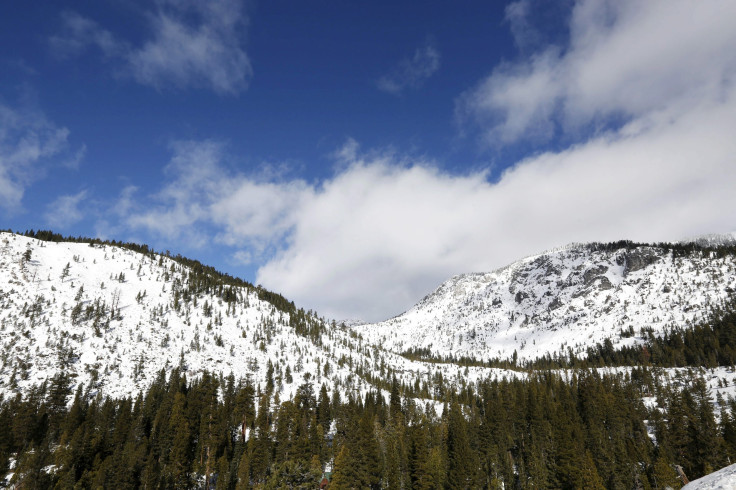California Drought: Sierra Nevada Snowpack Water Content Below Average, But Officials Say It’s Still Early

The Sierra Nevada snowpack — the source of roughly a third of California’s water supply — remains nearly 30 percent below average for this time of the year despite the state recently witnessing its heaviest rainfall in decades. In an update released Tuesday, California’s Department of Water Resources (DWR) said that the snowpack currently has a water content of 10.5 inches, just 72 percent of the Dec. 27 average.
“It’s too soon to know whether this winter’s wet season will deliver enough rain and snow to move California closer to the end of the state’s five-year drought,” the DWR said. “The snowpack usually is at its deepest and most water-laden around April 1, so weather watchers won’t know with certainty what kind of wet season it has been until then.”
California, reeling under a record-breaking drought that necessitated unprecedented mandatory water restrictions throughout the state, recently experienced its wettest October in three decades. However, even as the snowpack’s water content has steadily increased since Dec. 1 — traditionally the beginning of the three wettest months of the year in California — drought conditions still prevail in over 70 percent of the state.
Earlier this year, in March, when measurements were taken at what is normally the time of maximum snow depth, the snowpack held 26 inches of water content — 97 percent of the historical average. Even though the level was higher than expected, state authorities warned that the drought was far from over.
“October was one of our wettest on record, and December has produced a nice rebound from November’s below-average precipitation,” State Climatologist Michael Anderson said in Tuesday’s statement. “California needs sustained above-average precipitation and a decent snowpack to overcome the previous years of drought.”
DWR officials said they would perform a manual survey of the snowpack on Jan. 3 to supplement the electronic readings.
© Copyright IBTimes 2025. All rights reserved.






















